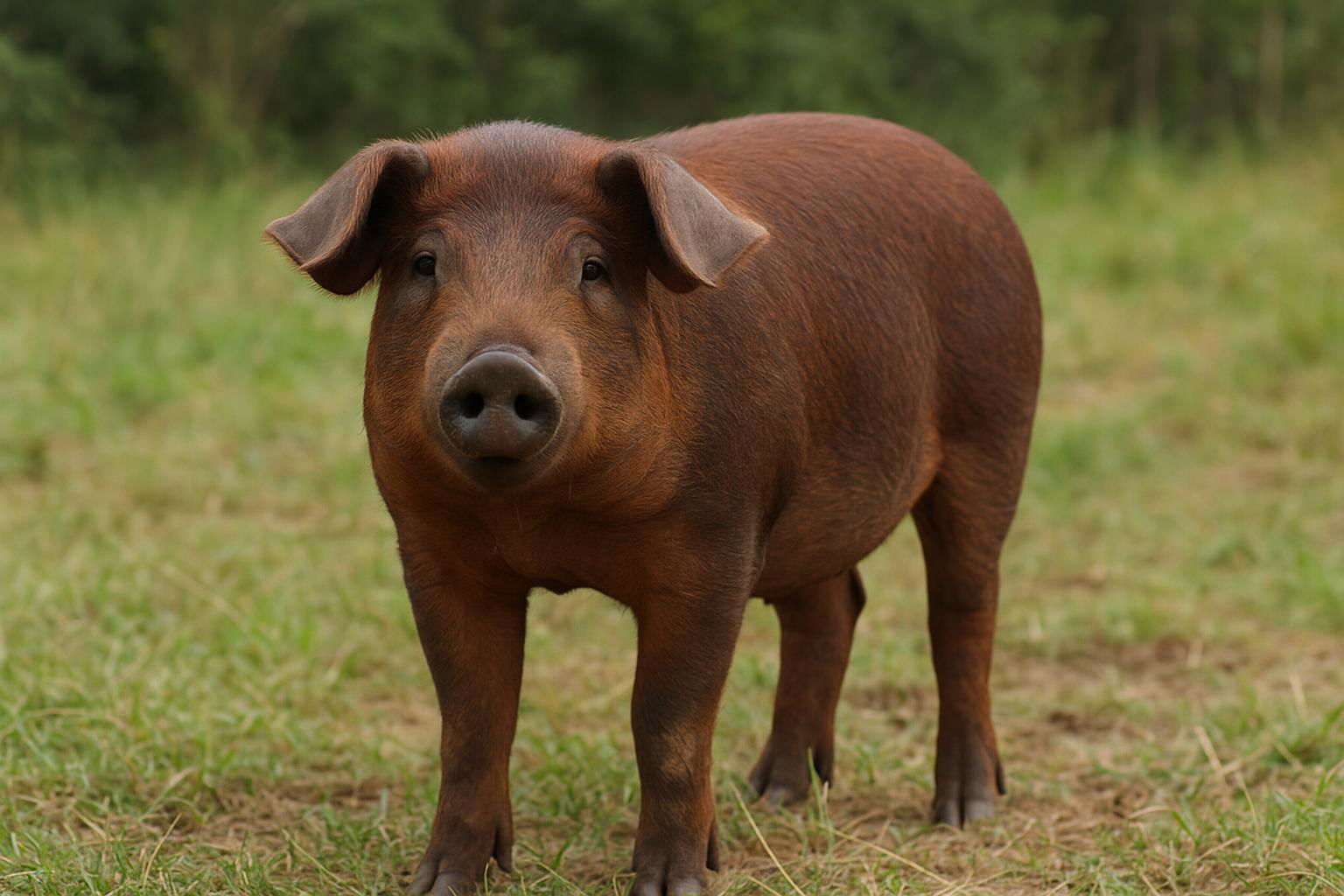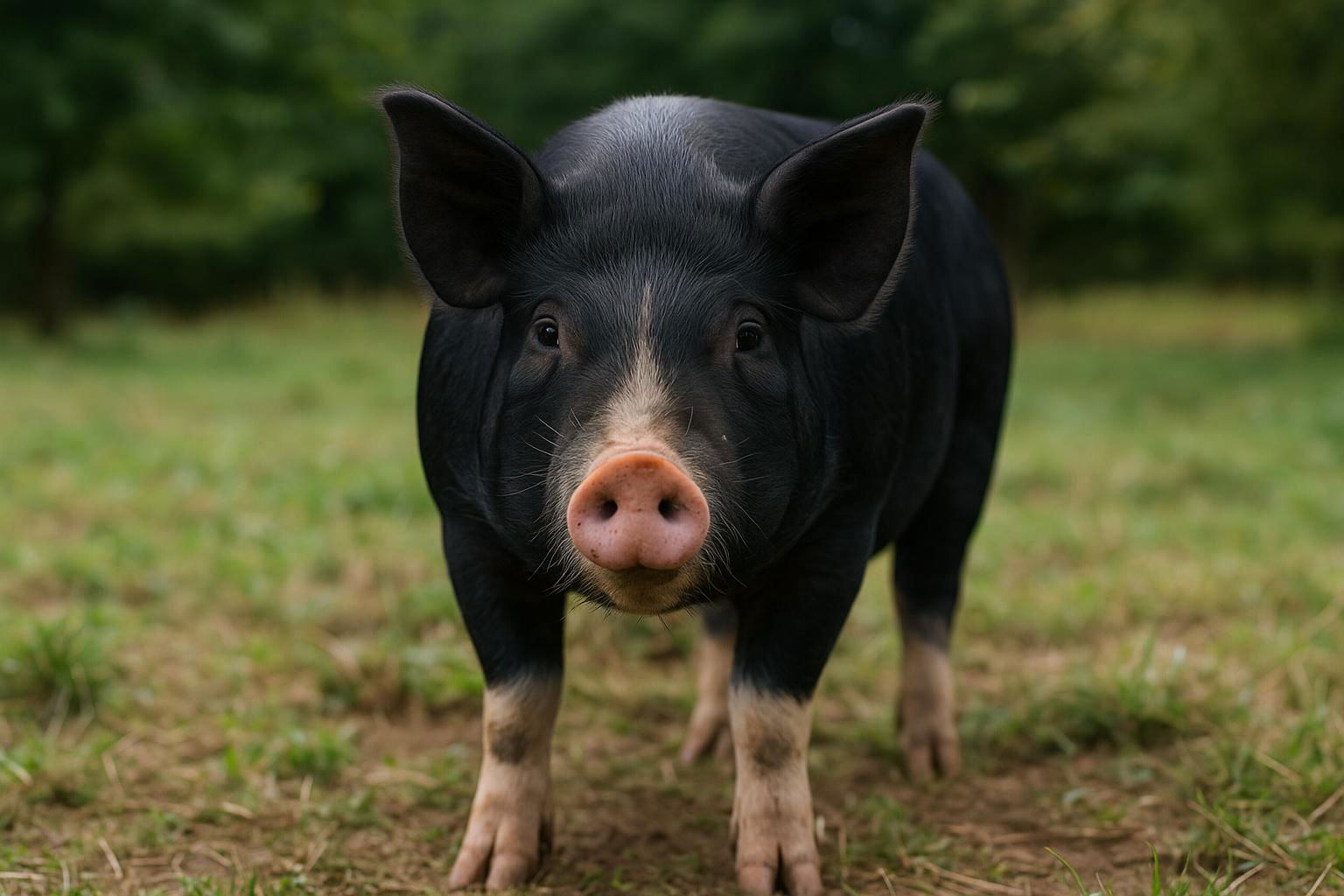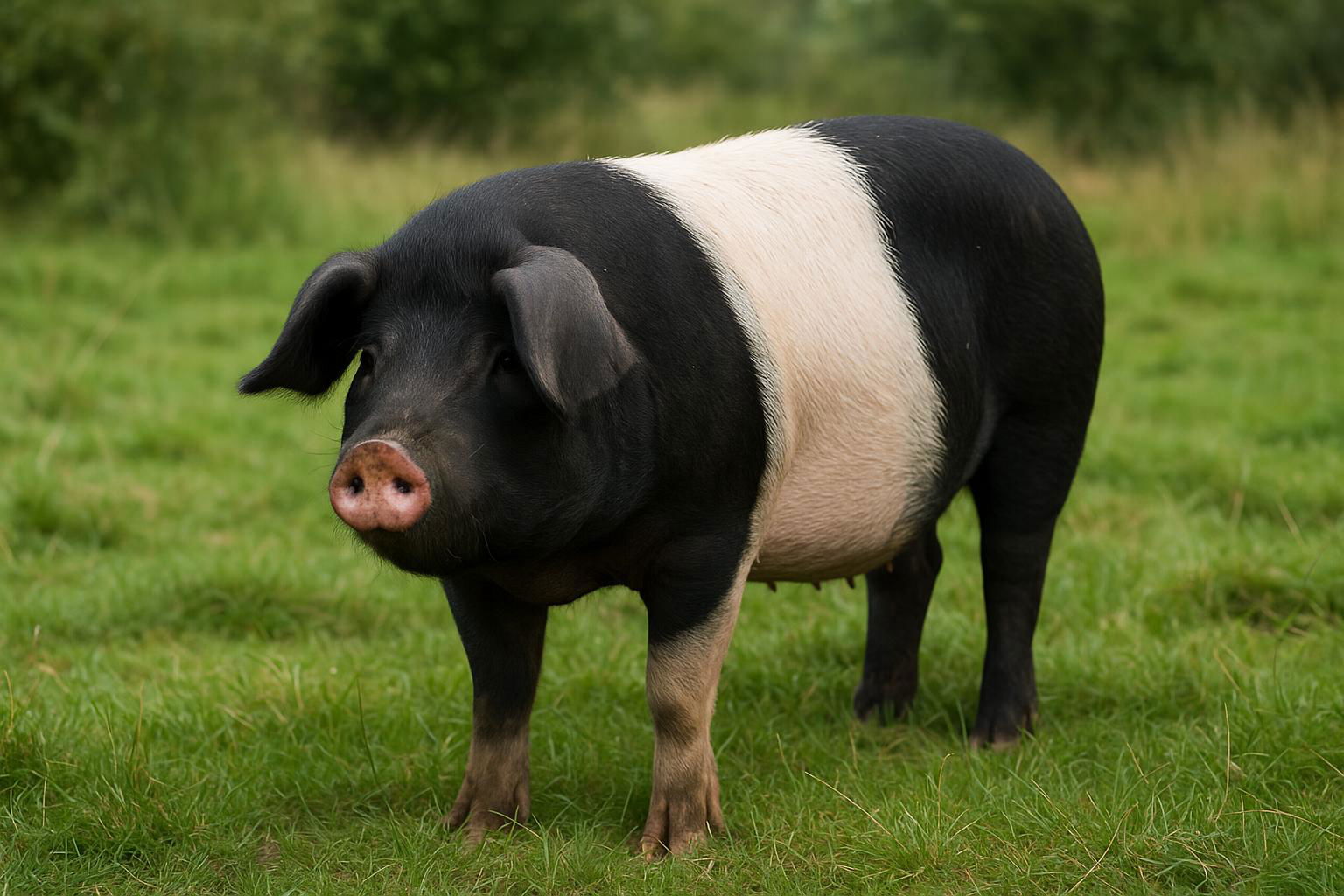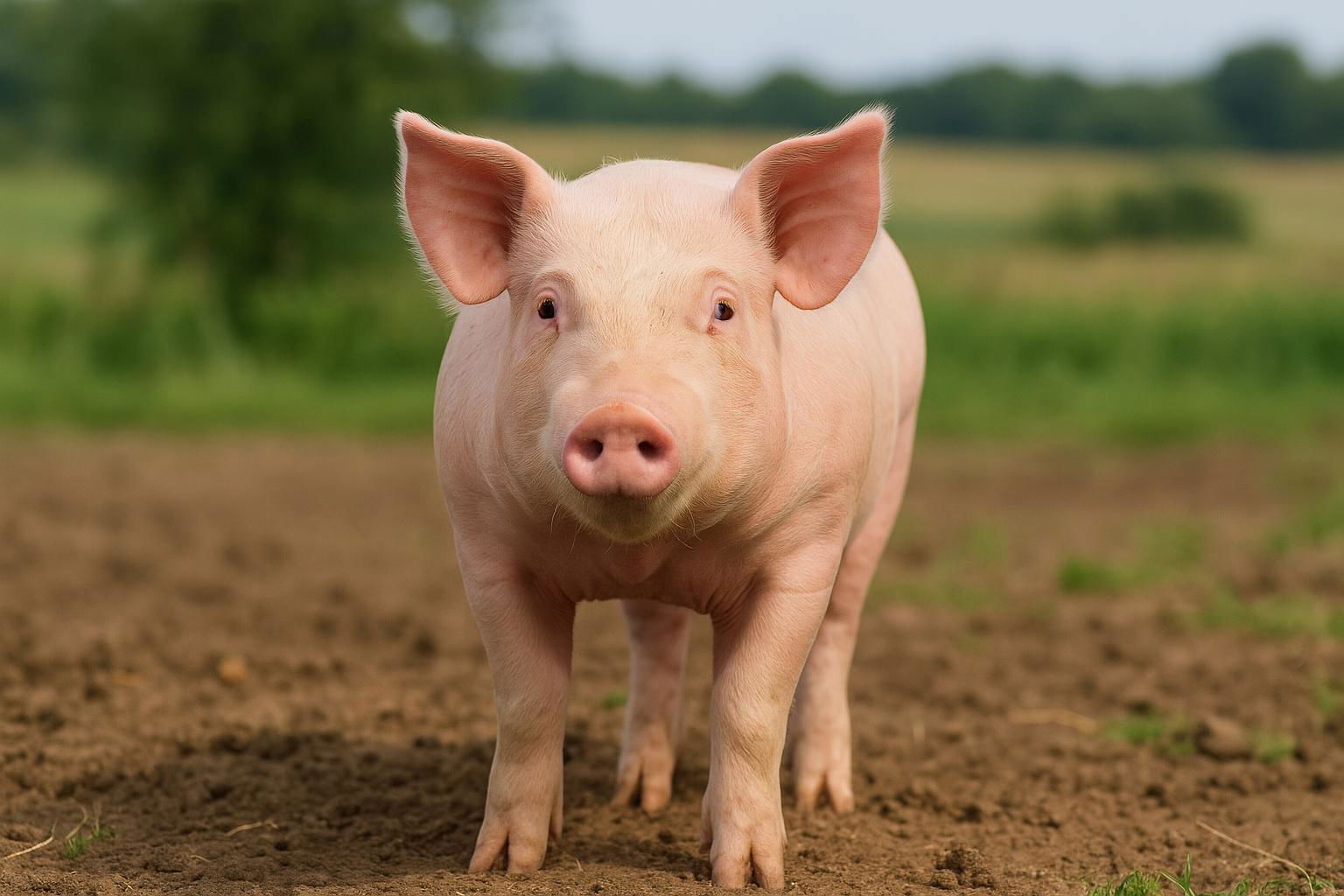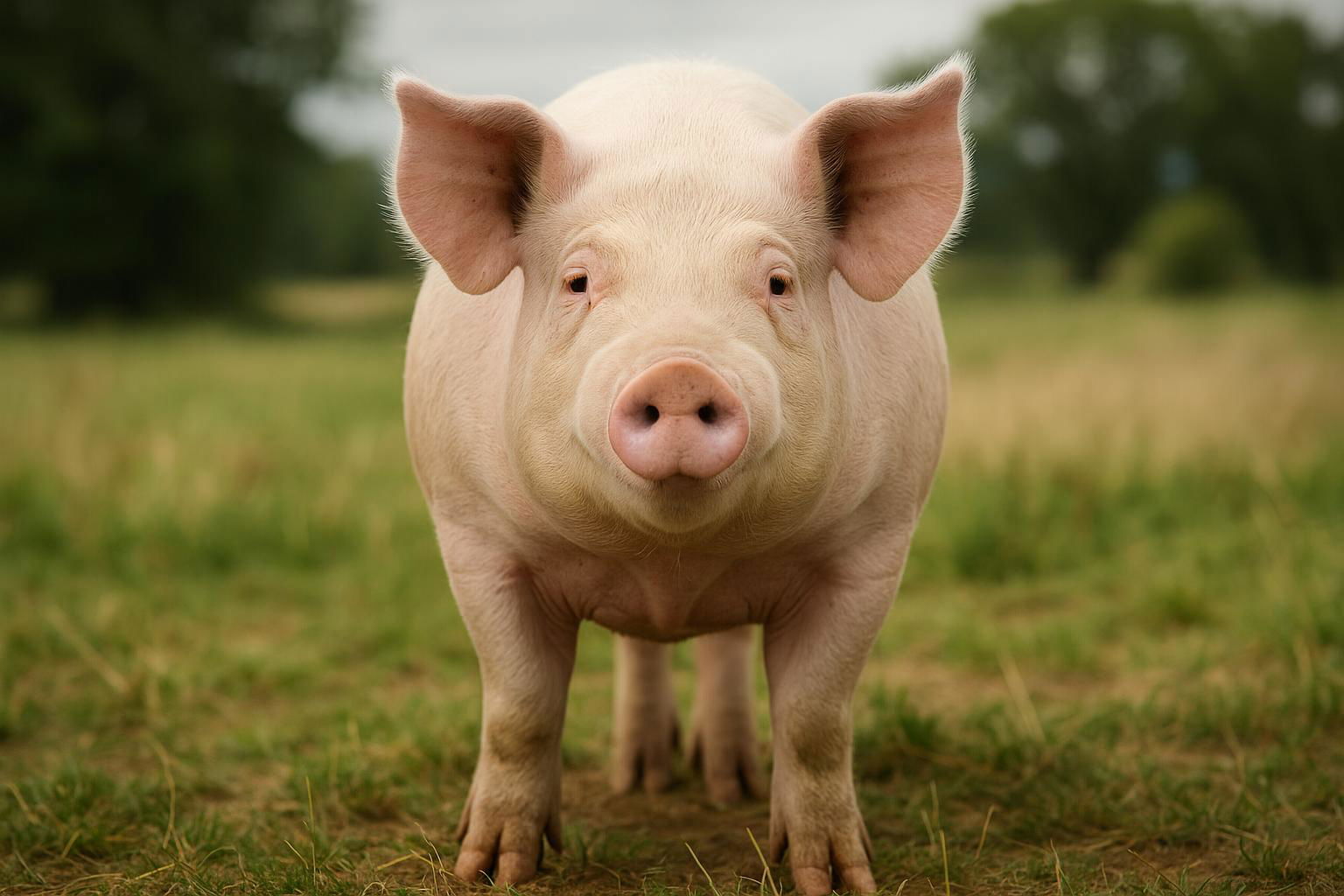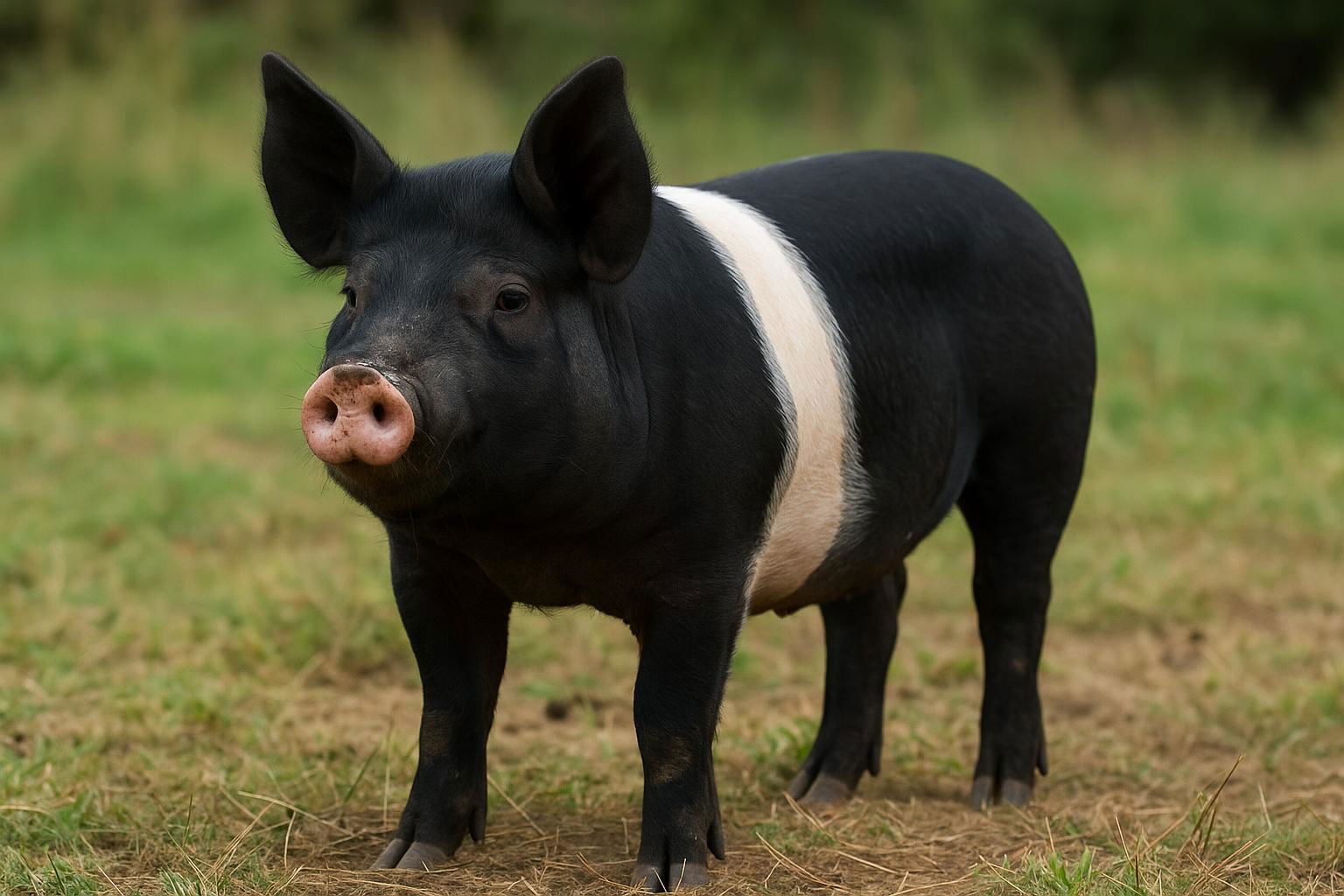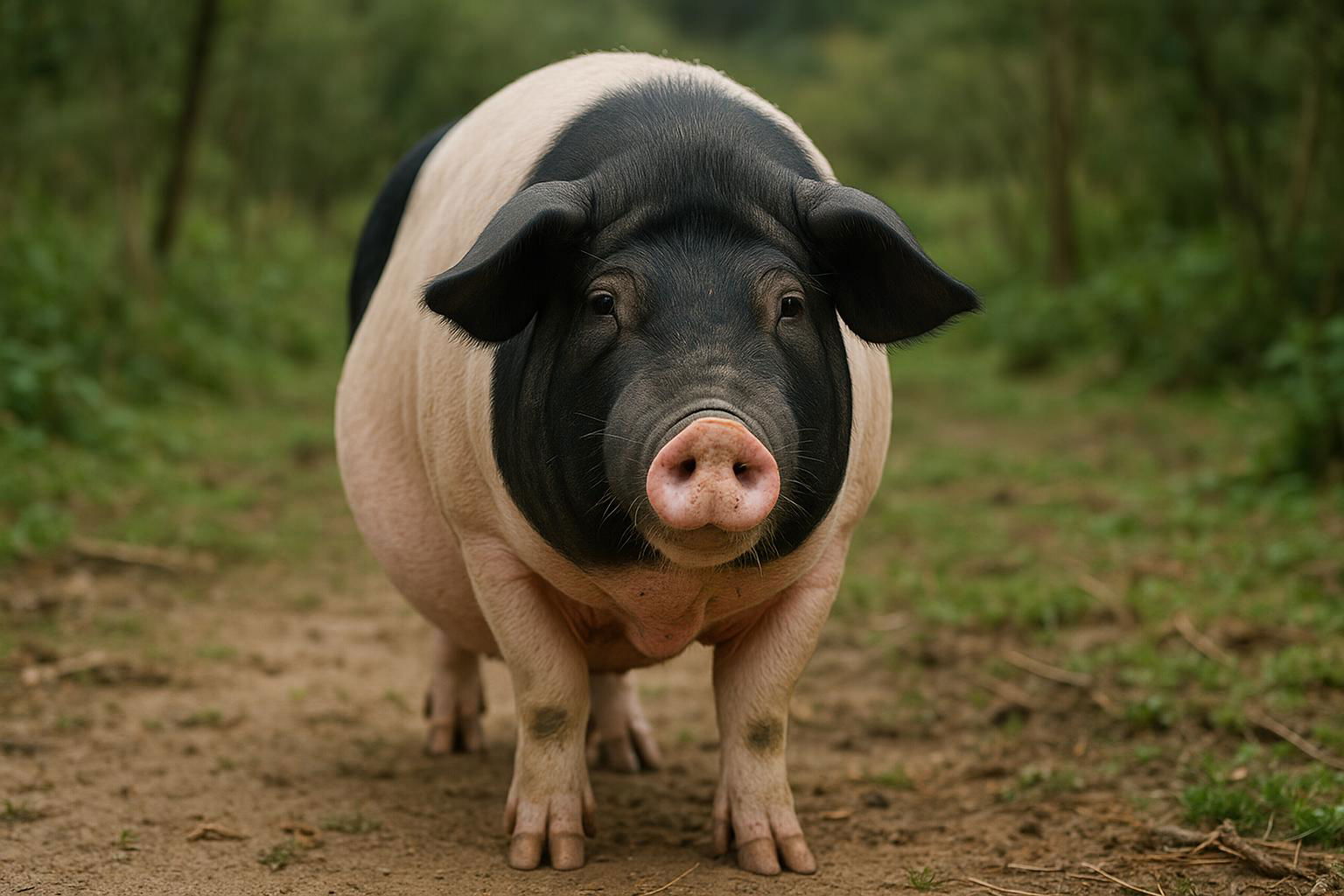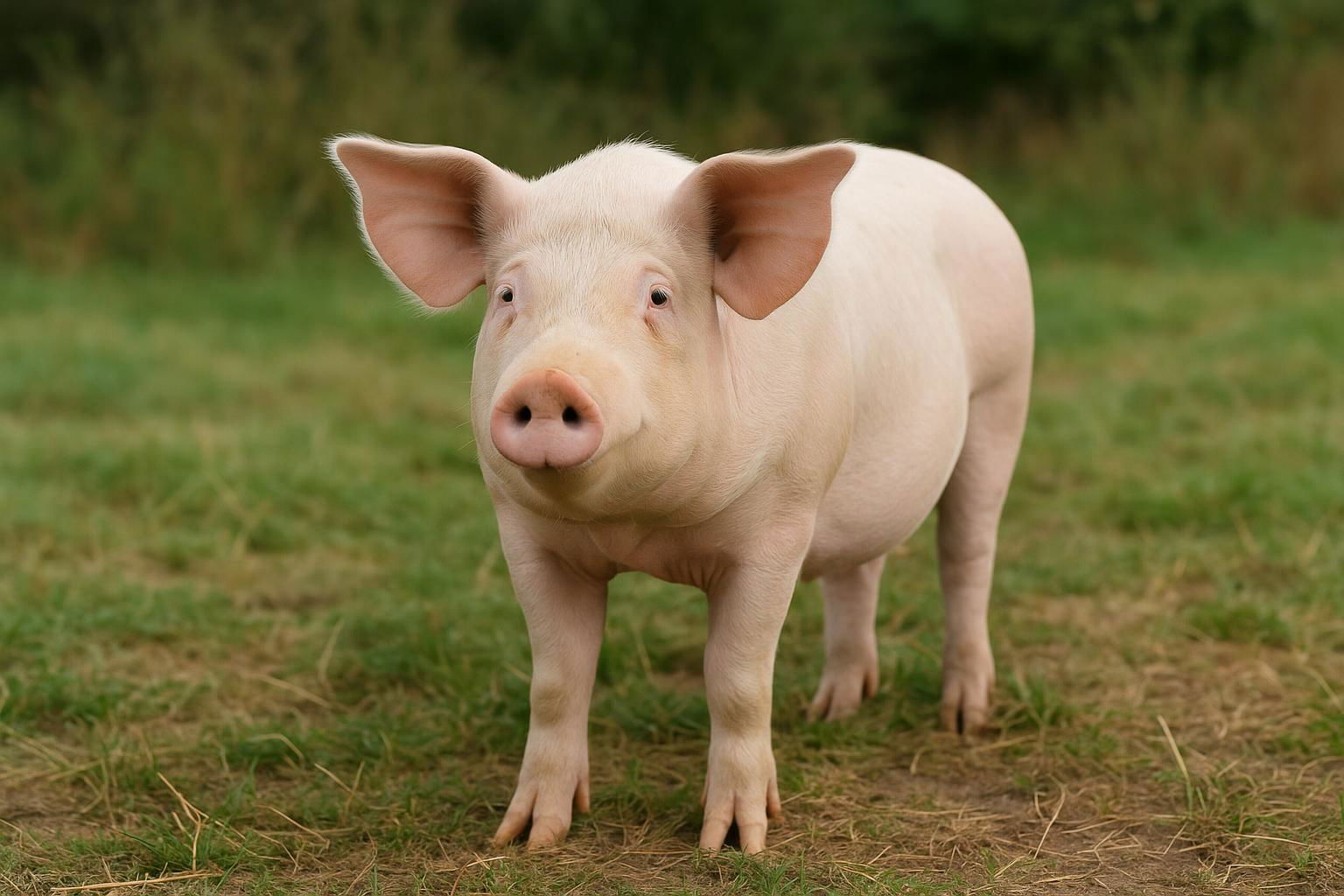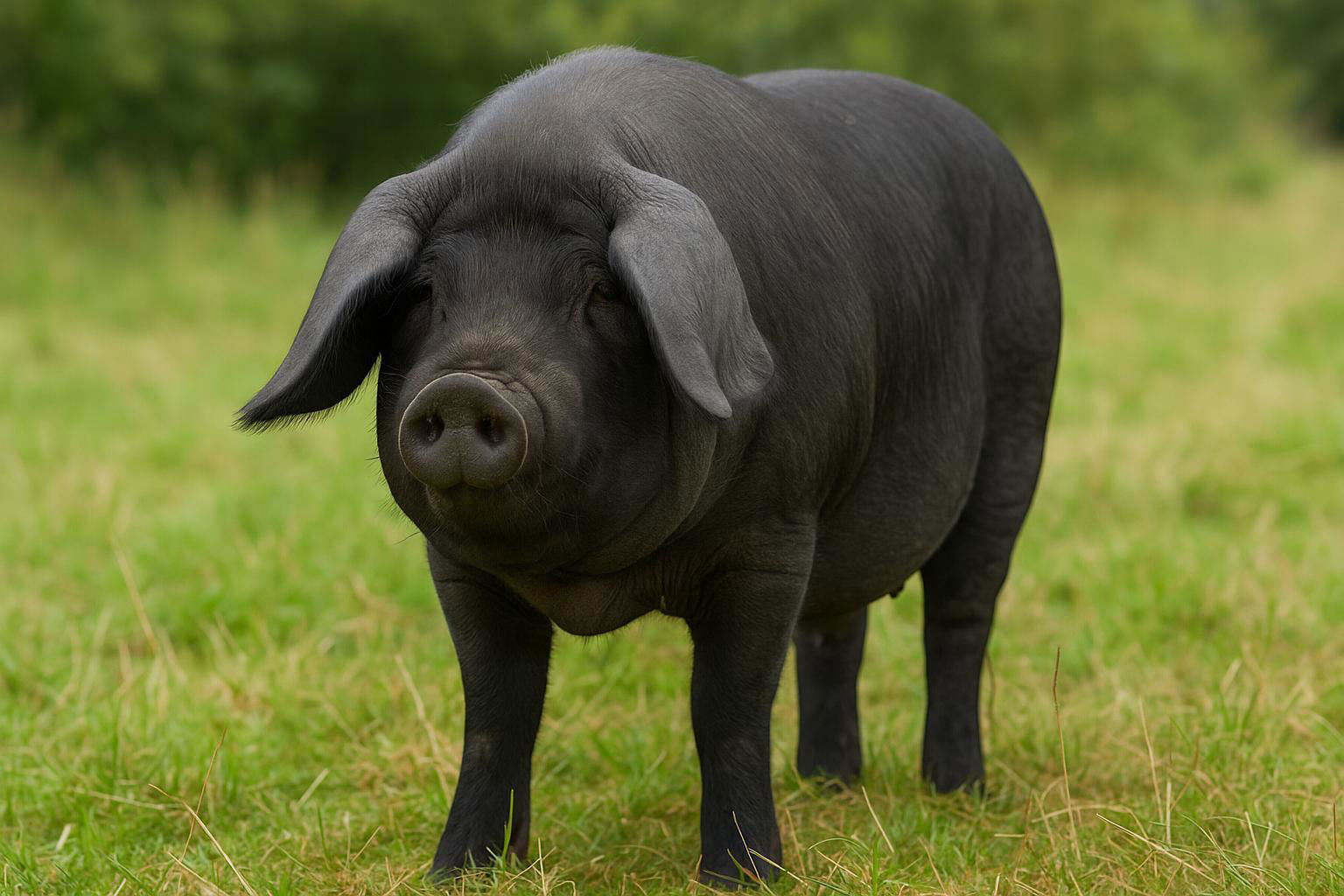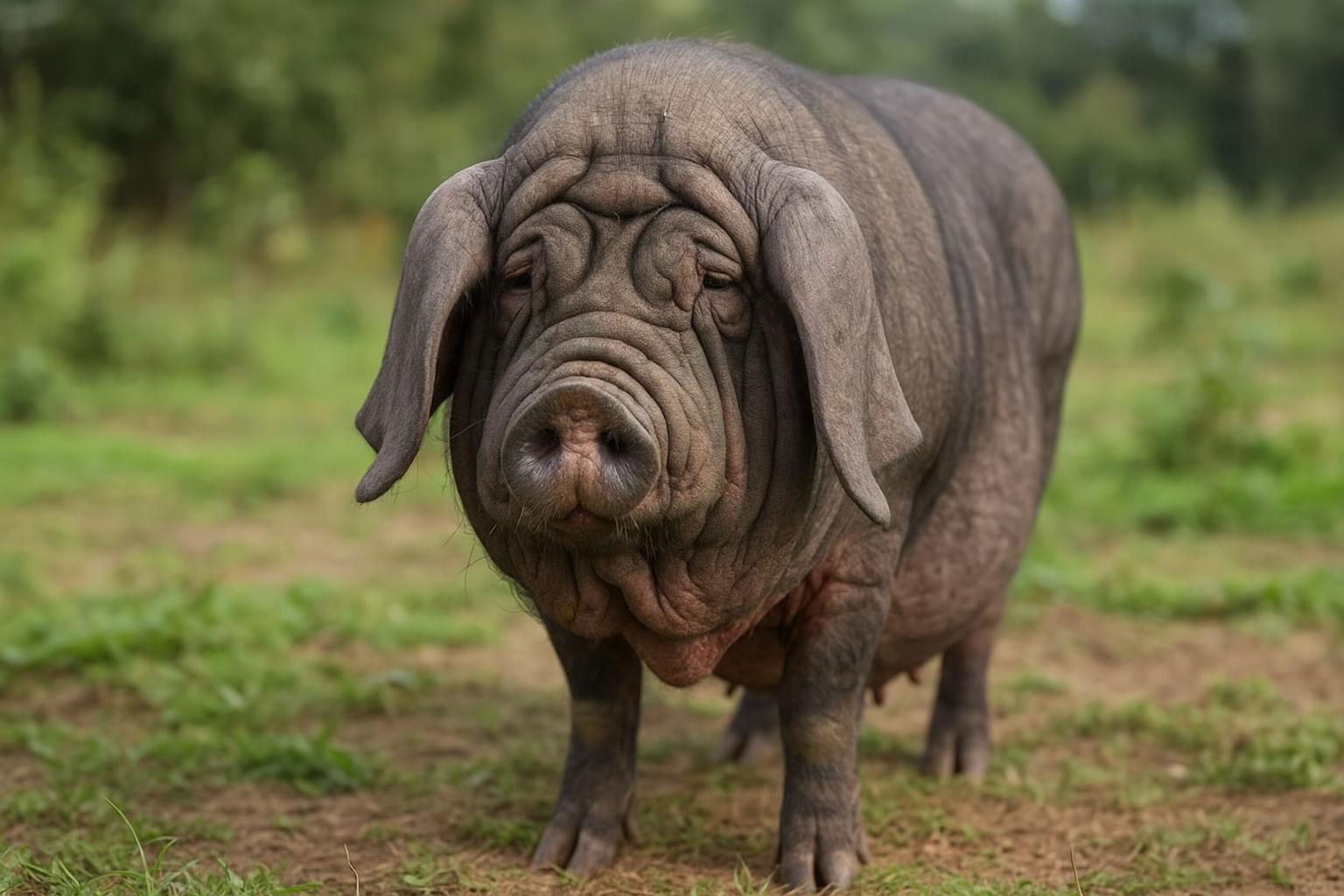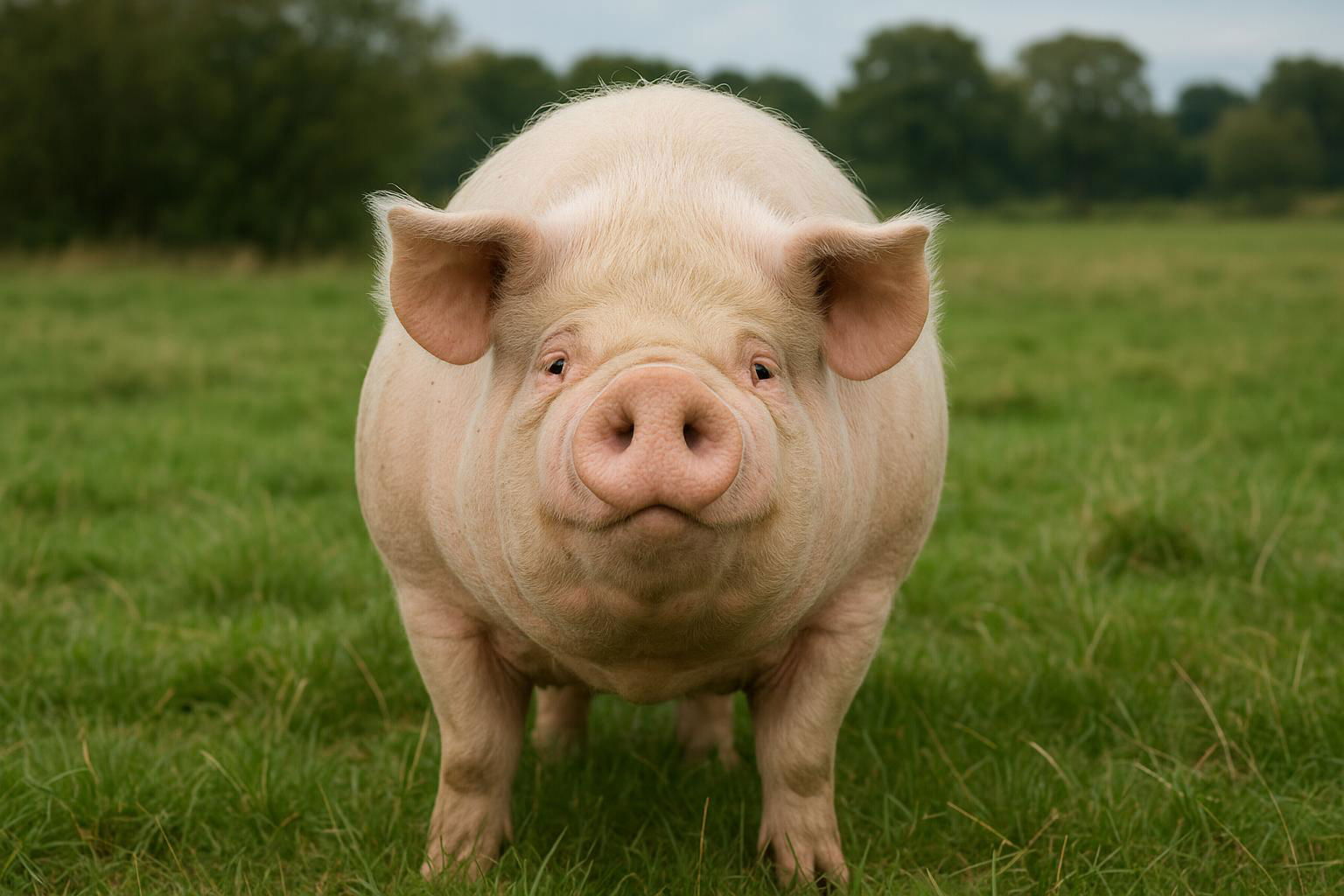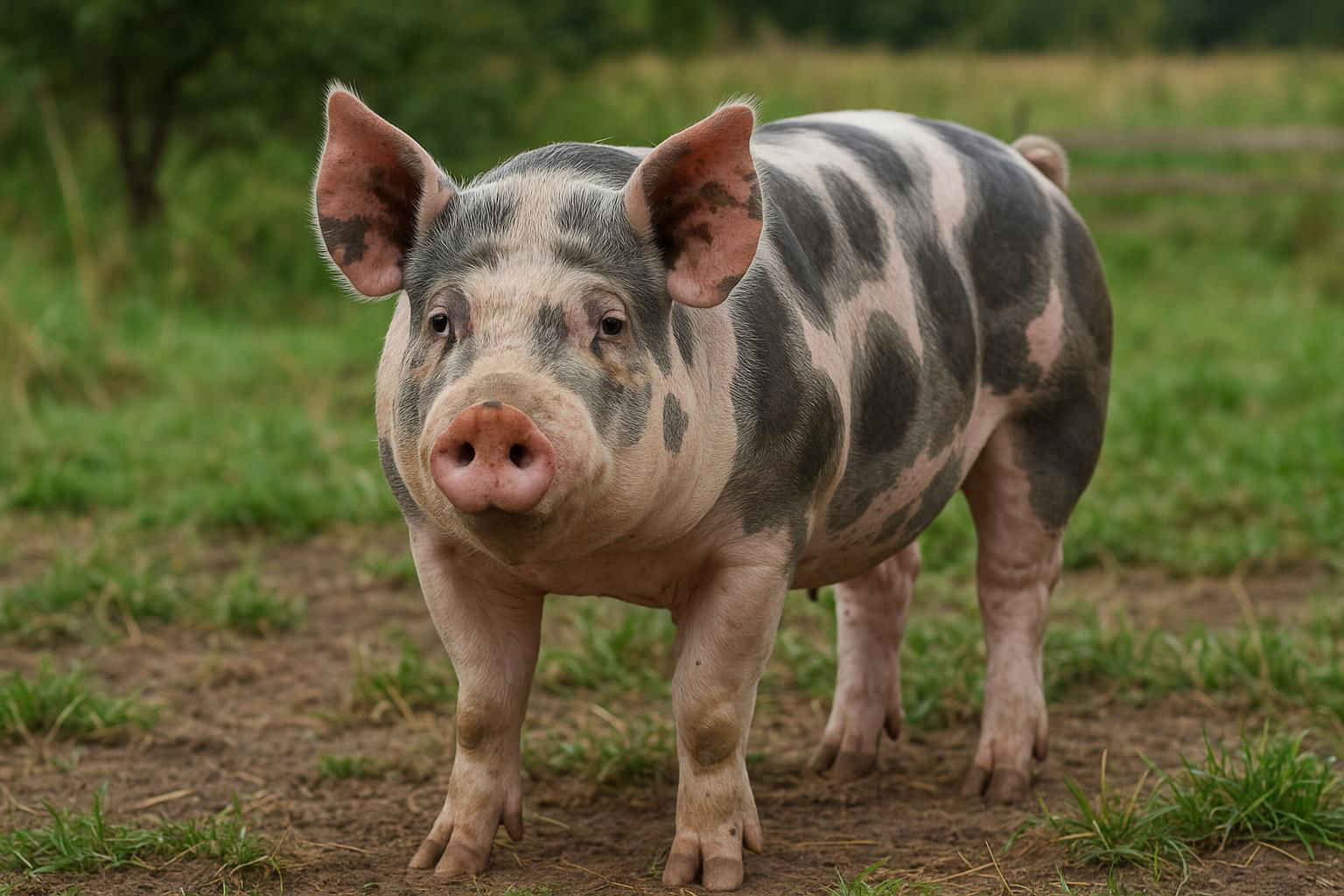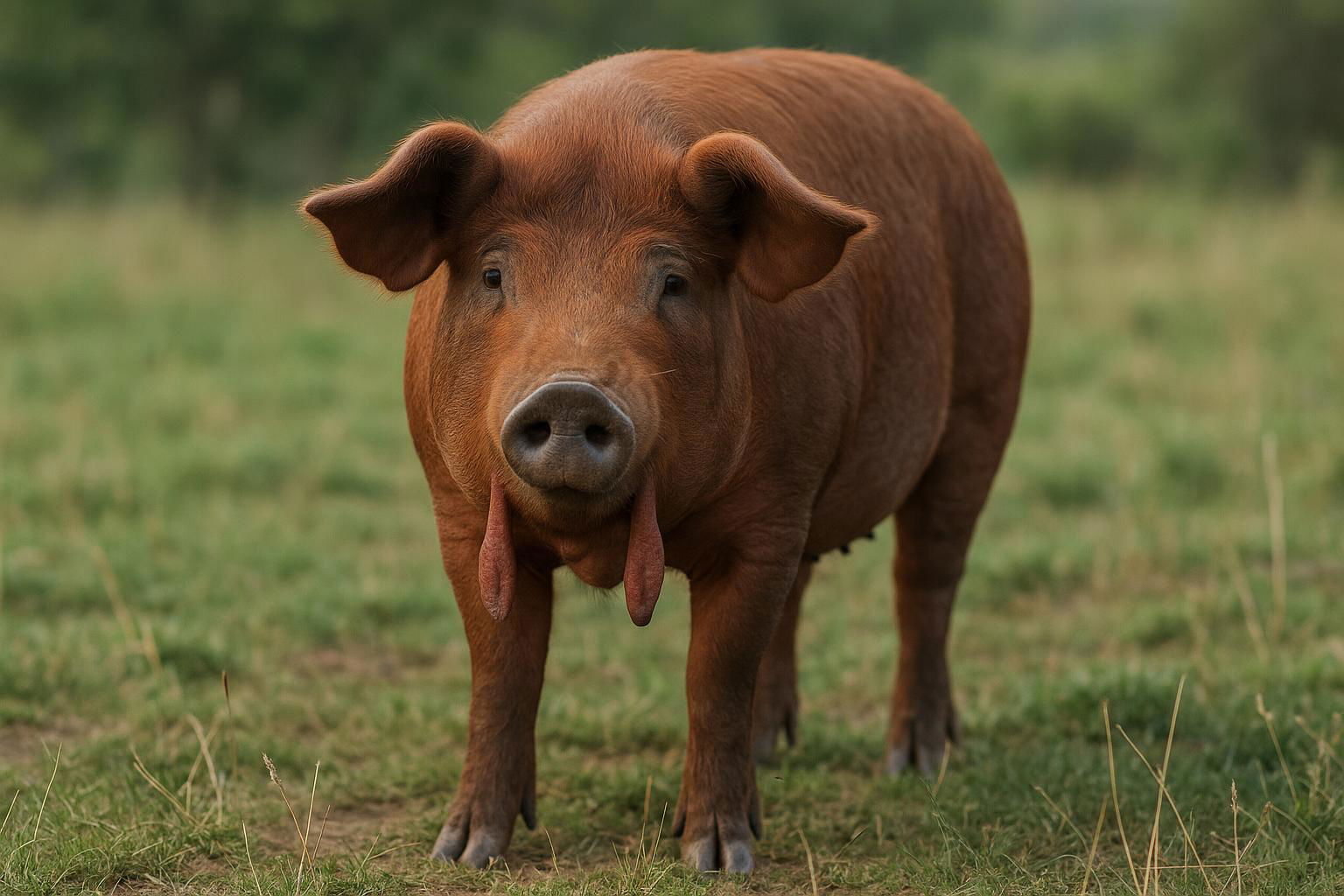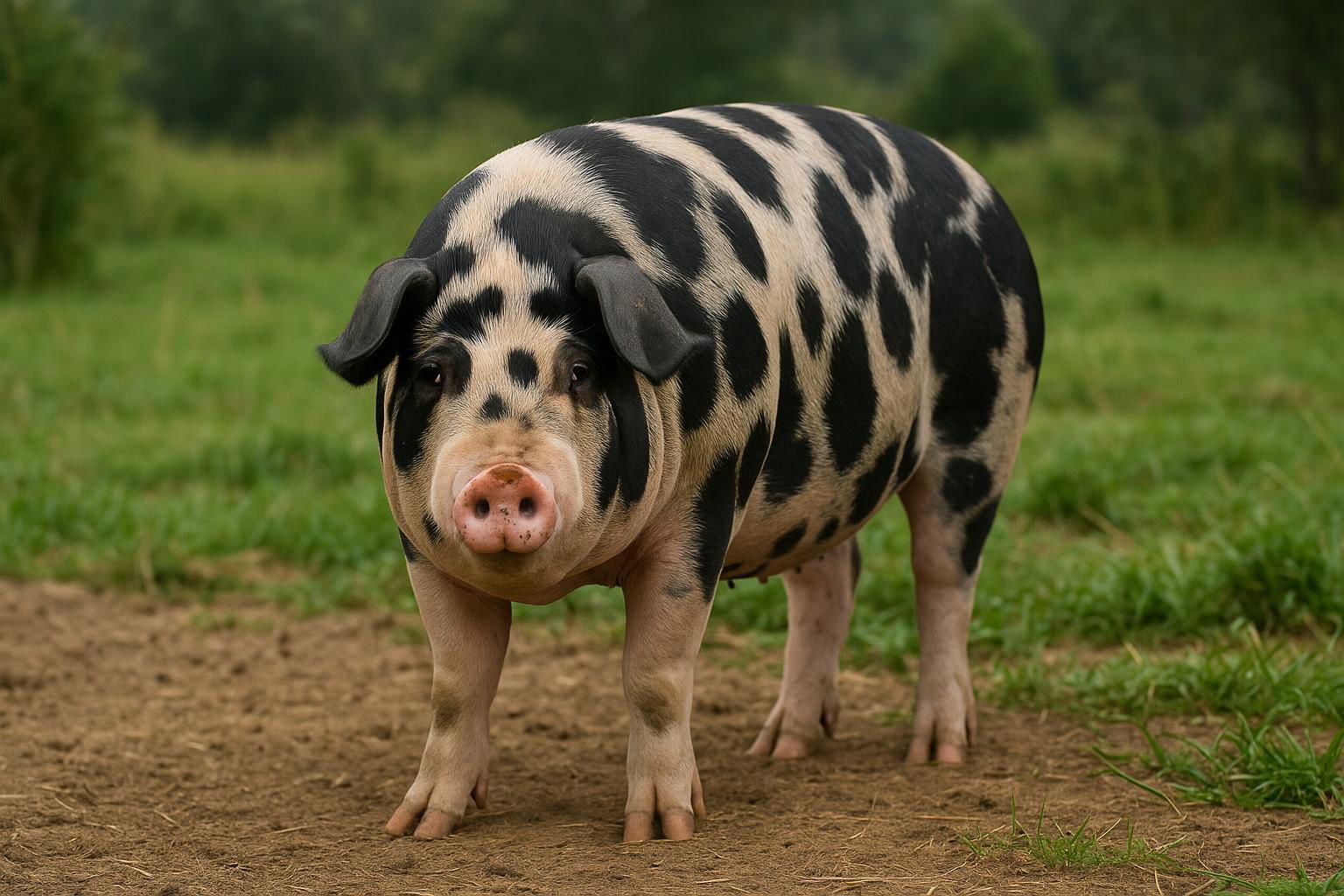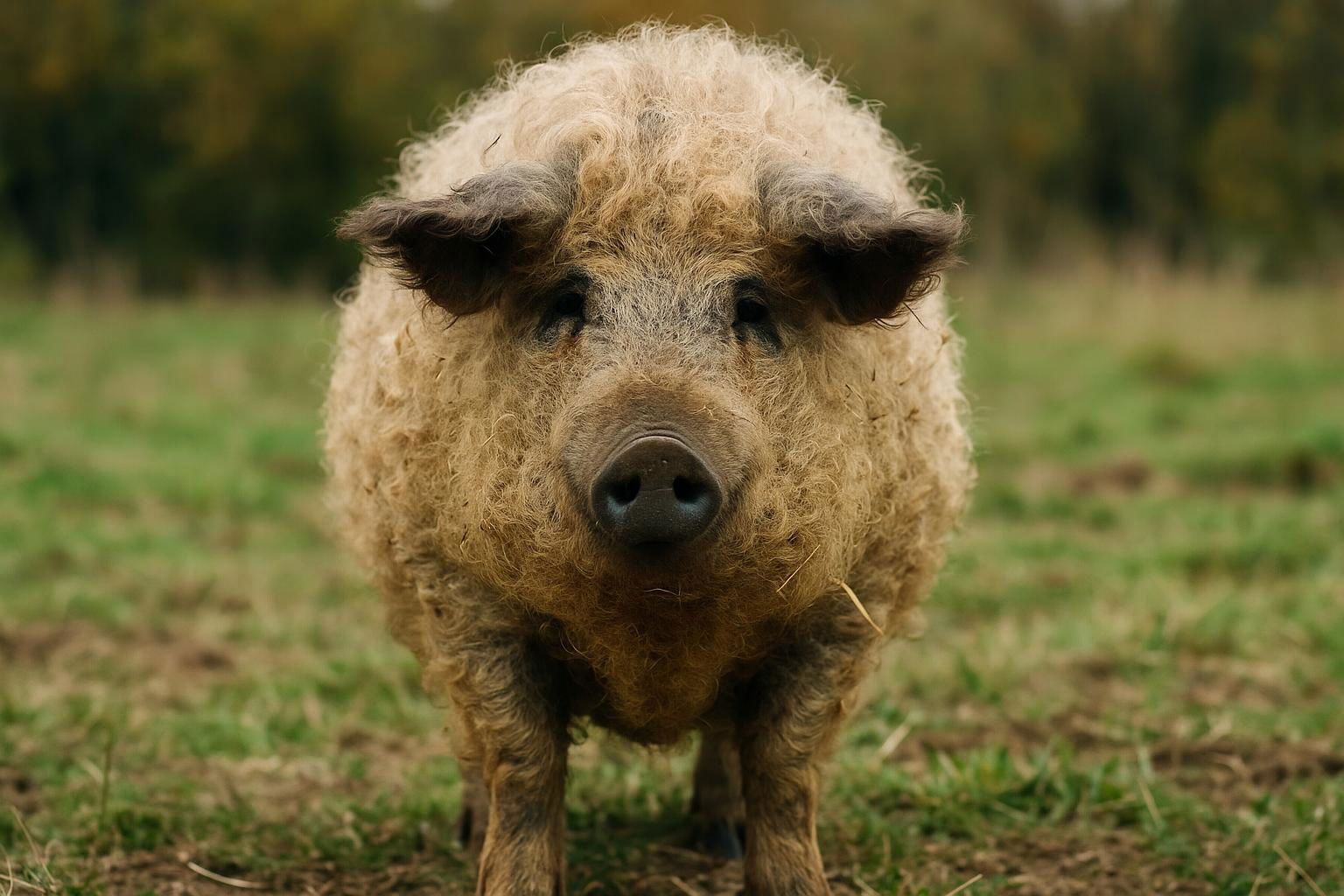
Mangalitsa
The Mangalitsa, often known as the "woolly pig," is a distinctive domestic pig breed recognized for its unique curly coat that resembles that of a sheep. Originating in Hungary in the early 19th century, this breed was developed from a mix of older Hungarian breeds and Serbian Sumadija pigs, creating a hardy animal perfectly suited for Central European climates. Known for their docile temperament and robust health, Mangalitsas are prized for their ability to thrive in free-range environments, making them an excellent choice for pasture-based farming systems.
One of the most notable characteristics of the Mangalitsa is its thick, woolly fur, which provides excellent protection against harsh weather. This coat can vary in color, with common variations being blonde, red, and swallow-belly. The breed is primarily valued for its high-quality, marbled meat, which is renowned for its rich flavor and succulent texture. This is a result of the Mangalitsa's ability to accrue a substantial amount of intramuscular fat, reminiscent of the marbling found in premium beef cuts.
Despite its exceptional qualities, the Mangalitsa was once on the brink of extinction due to shifting agricultural practices favoring leaner pigs. However, growing interest in heritage and gourmet meats has spurred a resurgence in Mangalitsa farming, as chefs and food enthusiasts alike search for its exquisite taste and unique characteristics. Today, the Mangalitsa stands as not only a testament to sustainable agriculture but also as a culinary treasure sought after by gourmet chefs worldwide.
Colors: Blonde, Red, Swallow-Bellied

